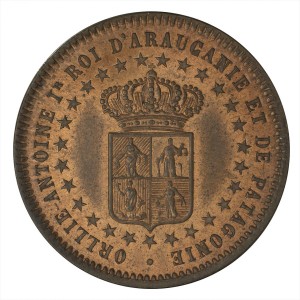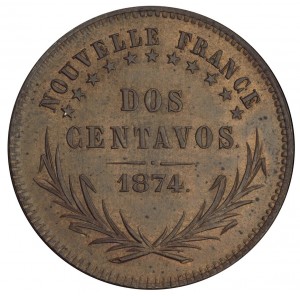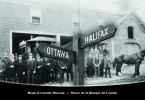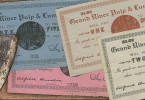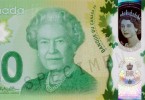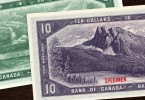Coins from a nation that wasn’t: Araucania and Patagonia
By David Bergeron, Curator
D’Antoine de Tounens in a meeting with the Mapuche people of Patagonia. (Wikimedia Commons, Jules Peco?)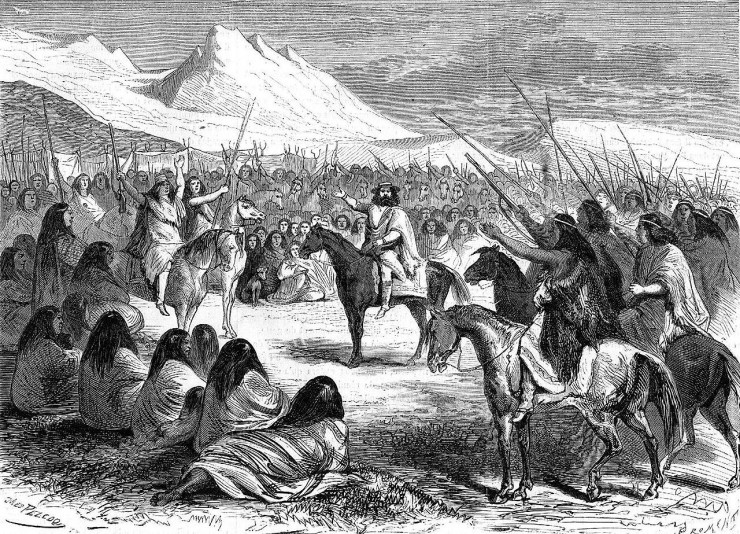
It is not unusual for “micro-nations”— city-states, principalities or minor kingdoms—to produce their own currency. Having a national currency is one way that a fledgling nation can promote its independence—sometimes before there even is a nation. But this coin, from a purely conceptual country in South America, is most intriguing for the history it now represents: the attempt of an indigenous people to establish their own nation in the face of colonization. Even more intriguing, what’s stamped on the coin implies this imaginary nation had already been colonized–by France.
Patagonia from the survey by the British ships Adventure and Beagle. (Wikimedia Commons, John Arrowsmith, 1842)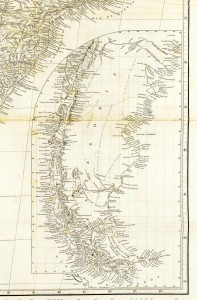
In the middle of the 19th century, a French lawyer and adventurer named d’Antoine de Tounens became fascinated by the Mapuche people of the Patagonia region of South America. The Mapuche were struggling to protect their ancestral lands, their identity and their culture from colonial expansion by the governments of Chile and Argentina. De Tounens went to Chile in 1858 to meet the Mapuche, whom he admired for what he regarded as their heroic resistance, and took up their campaign for self‑determination and sovereignty. In co-operation with their leaders, de Tounens drafted a constitution for “Araucania and Patagonia”, a region located in the southern half of modern Chile and Argentina. They declared the district a kingdom and de Tounens was named as its first monarch. The Chilean government arrested him in 1862, put him on trial and declared him insane. Narrowly avoiding execution, de Tounens was deported to France.
The National Currency Collection possesses three 2-centavo coins minted for Araucania and Patagonia in 1874. What is so curious about these coins is that they claim this potential nation for France. The legend on the reverse reads “NOUVELLE FRANCE / DOS / CENTAVOS / 1874". De Tounens appeared to have baptized the nation as part of New France, yet this designation is seen nowhere else but on the coins. The coins don’t originate from South America but by some accounts may have been struck, presumably at de Tounens’ request, in Belgium.
De Tounens intended to take the coins back with him to Patagonia to help re-establish his kingdom. Although he returned and failed on several occasions, a number of countries did choose to recognize his fledgling state. But it was not to be. In 1878, Orélie-Antoine de Tounens (as his magisterial name was) died in France as the exiled King of Araucania and Patagonia. A successor to the office of Royal Highness to the Crown of Araucania and Patagonia (in exile) still lives in France today–Prince Antoine IV.
The Museum Blog
What’s in Your Stocking?
By: Graham Iddon
Every prop in the holiday drama generally has some sort of symbolic meaning—evergreen trees: life in the dead of winter, holly: Christ’s crown of thorns, the dreidel: Jewish resistance to oppression. Money, on the other hand, only seems to symbolize itself.
Money from Space
Do you notice anything peculiar about this bank note? It’s blue; it’s denominated as 5-dollar; it has handsome portraits of Sir Wilfred Laurier on it…hold on a minute!Royal Canadian Numismatic Association
By: Raewyn Passmore
Nova Scotia has long been a centre of trade that connected Europe, New England and the West Indies. Following the American Revolution, Halifax became the primary British port in North America and a hub of financial activity.
Unpacking the Collection 3
By: David Bergeron
Before banks were established in remote regions of Canada, paying employees involved shipping currency long distances into wild and often lawless locations. The alternative to this risky enterprise was for the company to issue its own money. Called scrip…
The 2015 Commemorative $20 Bank Note Revealed
By: Graham Iddon
It’s a historic day for us as well. It isn’t every day that the Bank of Canada introduces a new commemorative note.
Unpacking the Collection 2
By: David Bergeron
During 1952, Comfort produced a number of pencil and watercolour design models for the face of the new notes. Some were updates of the traditional style while others were radically modern treatments.
Swindle! Canadian Phantom Banks
By: Graham Iddon
In exchange for pizza and a day out of the office, several Bank employees were persuaded to dress up in period costumes and re-enact three key moments from the history of this shady “bank”.
